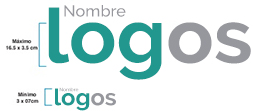Corporate Image
The identity of your company
Corporate Image refers to the concept constructed by society around a company, either spontaneously or intentionally. It may sometimes be confused with corporate identity, which is a much broader term, but are intricately linked. Image refers merely to the visual part of the company, its brochures, presentations, logos, typographies and colors. Identity represents a much more global concept that includes the image, but also includes communication norms, values, mission and vision of the company.
Every company should create their own corporative image, as well as its own identity to distinguish itself from the rest. To create it, you must cover 7 essential steps:
Name
The company should have its own name, to distinguish itself from others, regardless of the business field it is in. The legal name is the first indicator of existence of a company, which helps confirm the identity. The trade name of the company or brand also helps to identify itself.
NAMING

Logo
The logo serves as a visual translation of what the name means, illustrating some aspect of the brand or company. It can be the name with a specific typography, or it can be paired with an image or symbol that is related to the name or the field of the company. It helps the public remember the brand, because it reinforces the idea with an image so it stays ingrained. This happens because for most people, visual memory is much more powerful than virtual memory.
Graphic Symbolism
There are many brands that use symbols or images in their products instead of words. Images have a much greater impact over words on someone’s senses and memory, so graphic symbols are more effective in giving authority and providing identity to brands.

Chromatic Identity
Color acts as a signal, rather than as information (in the case of symbols and logos). It is through colors, that you can create a very delimited identity, for example the red cross or road signs.
Cultural Identity
We should consider the distinctive elements of the corporation’s culture, as well as the socio-cultural environment, to find the way to represent them. This helps to give character and define the style of the company, such as Google that is characterized by its liberal and creative style throughout their offices.
Corporate Architecture
Places of interaction between the company and it’s public, such as offices, should be identified and designed with the rest of the image so that everything is congruent and those who seek to become involved with the company find it trustworthy.
Objective Indicators
Quantifiable data and information about the company, such as financial statements, inventories, balance sheets or annual reports. They can be included in an institutional brochure, so that clients know more about the company.
Some factors force companies to distinguish themselves from the rest to not be forgotten, such as:
The saturation of products and services in the market: we have available a very wide range of products and services that are similar to each other. The homogenization of products and services: As time passes, products and services of different companies are becoming more alike due to the low cost technology is able to provide us compared to the past.
Consumption acceleration: Over time, product life cycles have become shorter, forcing once innovative product to become obsolete in a short period of time.
Communicative saturation: When too many messages are transmitted through the media, it becomes very easy to get them confused when there is nothing that distinguishes them from each other.
Qualitative changes in target audiences: Since there is greater access to information, audiences are much more critical and demanding when analyzing everything that is presented to them, including considering alternatives. Because of all these general features, it is difficult to identify, differentiate and, above all, remember market supply when they are not planned to have a lasting impact on people.
Having a well-defined corporate image helps the company become memorable and, therefore, consumers have the brand present when a need arises. Its importance lies in the following points:
- Occupying space in the target audiences mind.
- Facilitates differentiating of the company from its competition.
- It diminishes the influence of situational factors.

It also helps to:
- Sell a product or service offered by the company
- Attract better investors
- Attract better employees




